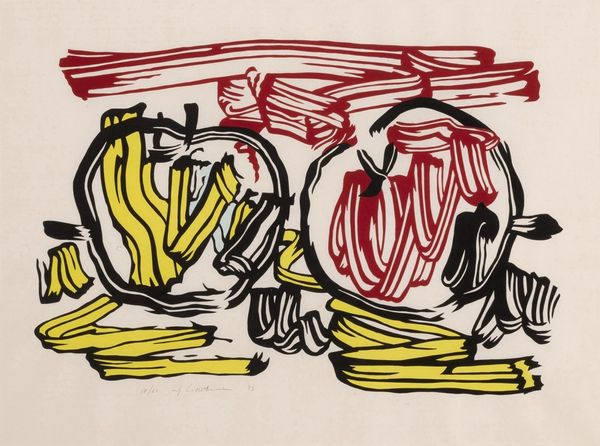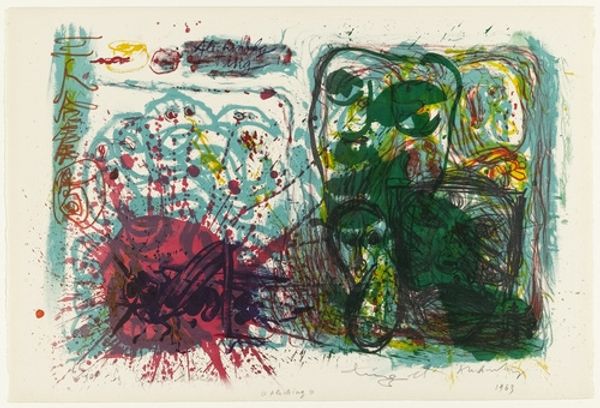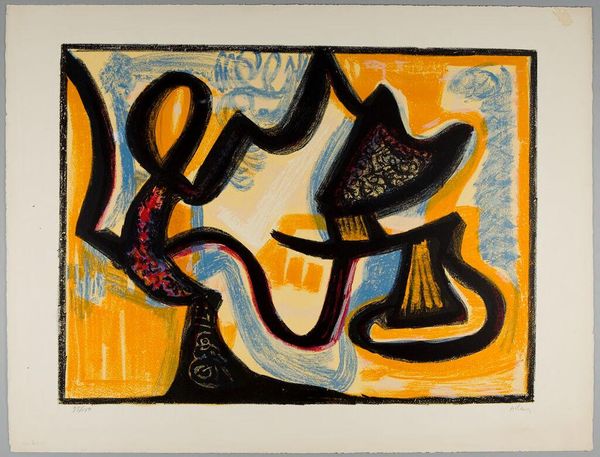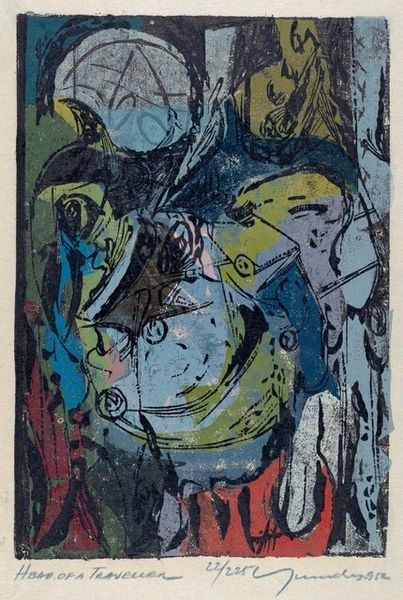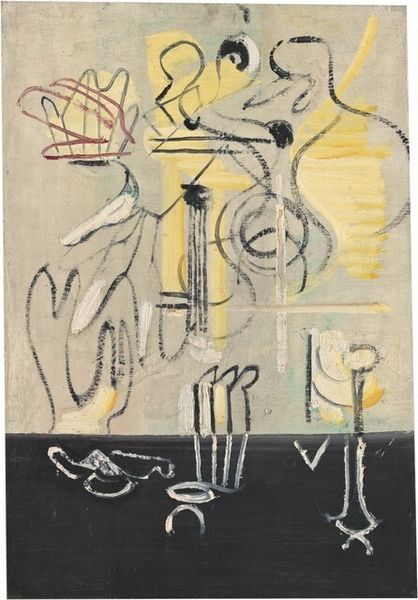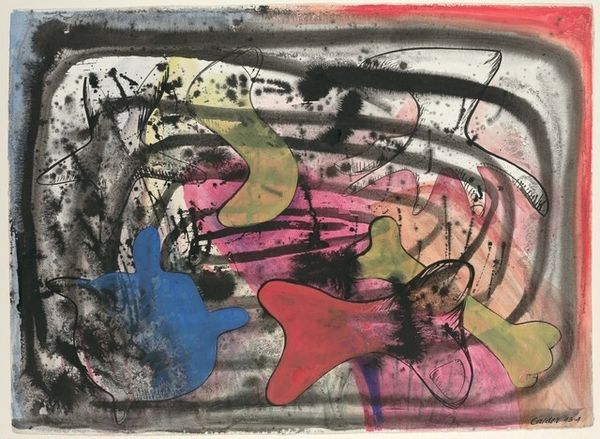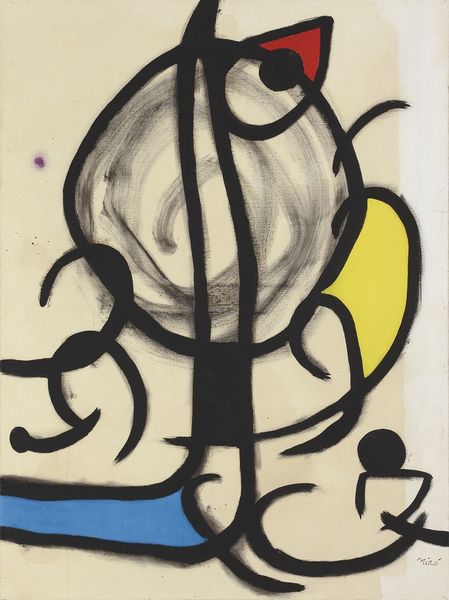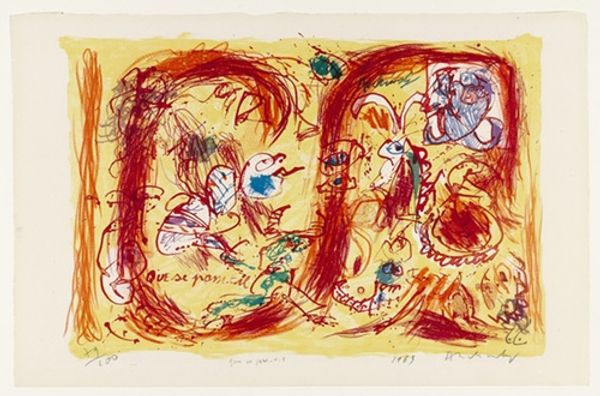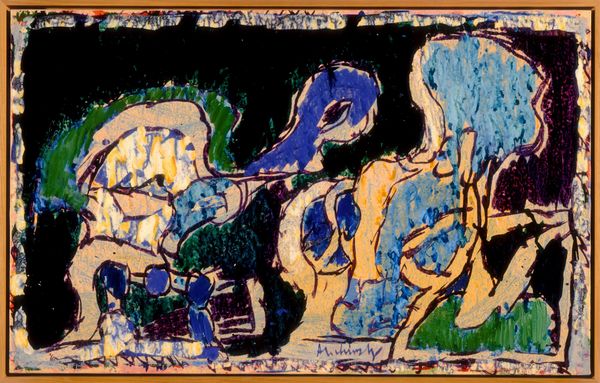
painting, oil-paint
cubism
painting
oil-paint
landscape
figuration
modernism
Dimensions 19.2 x 26.8 cm
Curator: Fernand Léger’s oil painting “Part campaign,” housed here at the Musée National Fernand Léger, strikes me as rather playful. The way the figures are reduced to basic shapes and outlined in black makes it look almost like a child's drawing, doesn’t it? Editor: I agree about the sense of playfulness, but I'm more interested in how Léger presents ideas about labor, leisure, and perhaps even community. There is the suggestion of industrial forms—is that a car I spy? —juxtaposed against a more organic, pastoral setting. What do you make of that tension? Curator: To me, that contrast embodies Léger’s engagement with both modern industry and traditional life, which he saw not as opposed, but as potentially harmonious. It’s a theme consistent with his celebration of the "mechanical elements" that defined his era, but he also infused that mechanization with the age-old archetypes of human enjoyment of life. Look at the symbolism of this motif repeated throughout modern painting: people taking to the parks, and leaving the urban setting behind! Editor: But does the symbolism ring true? Léger’s "mechanical elements" are still fundamentally rooted in human figures and leisure, presented as though industrial labor never happened. Whose labor, precisely, is rendered invisible here? Does this harmonic "pastoral" not perpetuate classist notions? Curator: The shapes! The bold primary colors evoke something fundamental in human perception, recalling iconic posters, or even simple educational tools designed for clarity. There is an appealing accessibility. It seems like his imagery draws inspiration from different sources. Editor: I think his sources need unpacking. Yes, the accessibility is striking, almost aggressively so. But if the goal is, perhaps unconsciously, to gloss over structural inequities, then maybe that visual simplicity demands we, as engaged viewers, dig deeper to ask tougher questions about it. Léger seems to evoke figures enjoying leisurely life. What could a painting like this mean to audiences whose everyday experiences are rooted in marginality? Curator: Interesting. While I focused more on formal visual motifs, you address social and historical connotations. Editor: That's because those formal elements – the shapes and colors, even the drawing itself – do not occur in a vacuum. Rather, their seeming naivety only underlines the sociopolitical power structures inherent to them! I suppose that's the role we have as interpreters – to tease out, through this dialogue, the complexity in seeming visual accessibility.
Comments
No comments
Be the first to comment and join the conversation on the ultimate creative platform.

